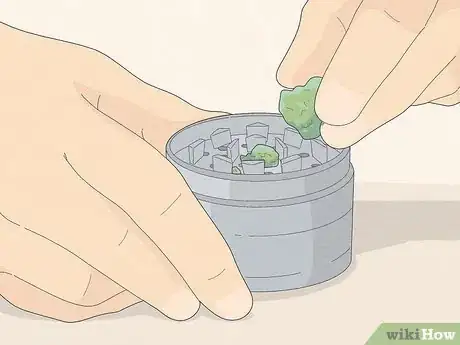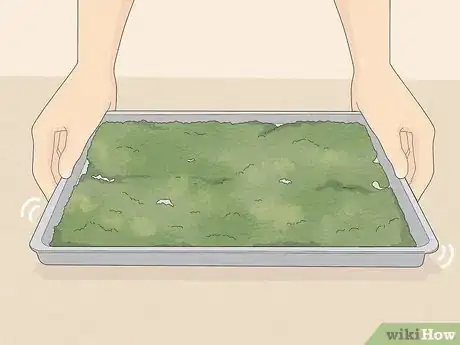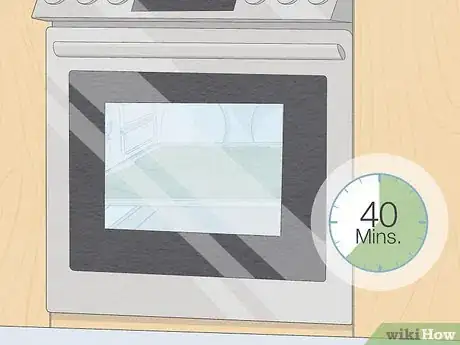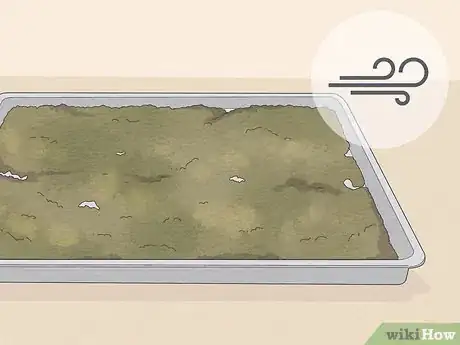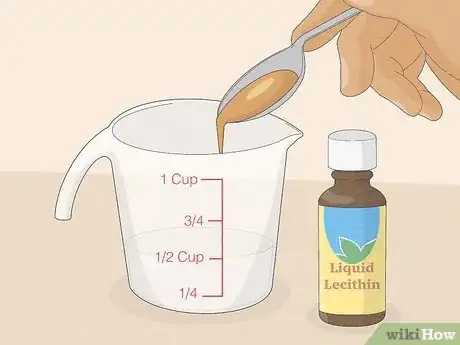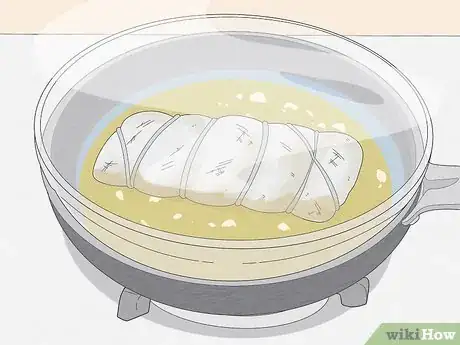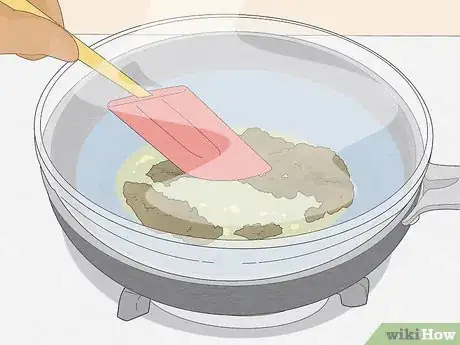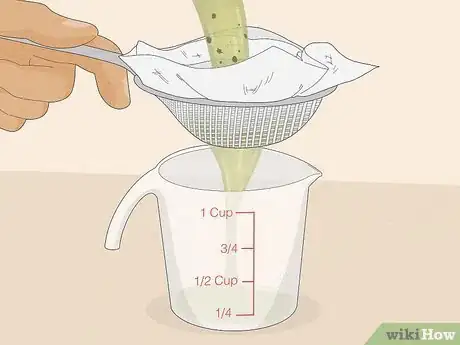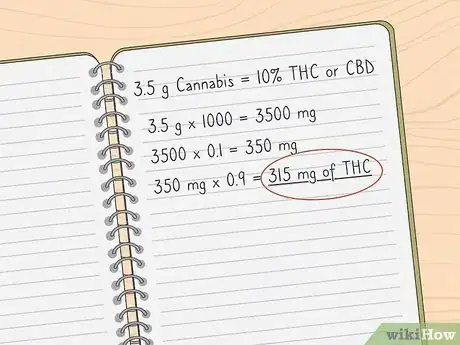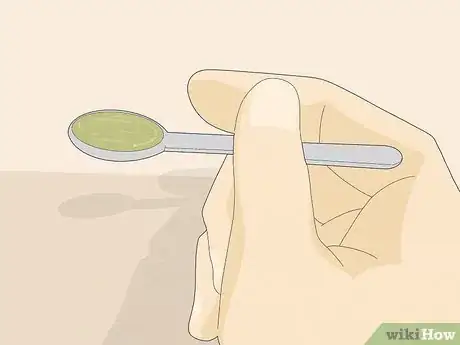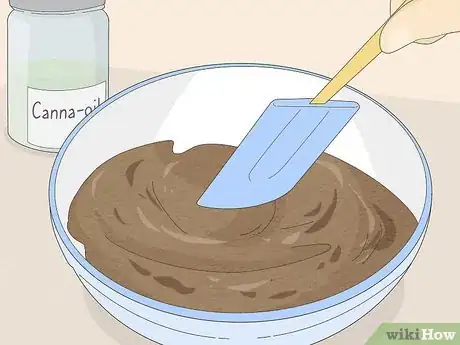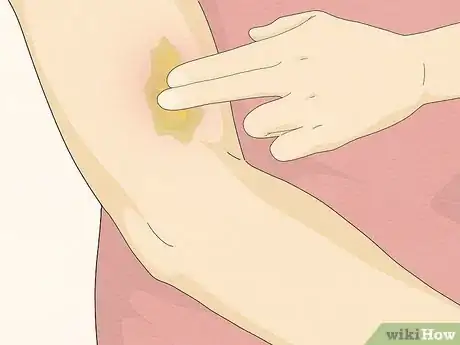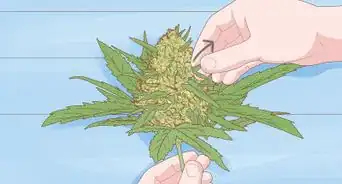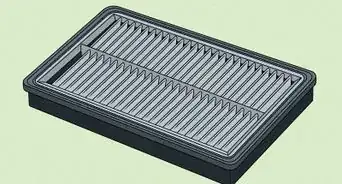This article was co-authored by Aimée Shunney, ND and by wikiHow staff writer, Hunter Rising. Dr. Aimée Gould Shunney is a Licensed Naturopathic Doctor at Santa Cruz Integrative Medicine in Santa Cruz, California where she specializes in women's health and hormone balancing. She also consults with various companies in the natural products industry including CV Sciences, makers of PlusCBD Oil. Dr. Aimée educates consumers, retailers, and healthcare providers about CBD oil through written articles, webinars, podcasts, and conferences nationwide. Her work has been featured at the American Academy for Anti-Aging Medicine, the American Association of Naturopathic Physicians Conference, and on Fox News. She earned her ND from the National College of Naturopathic Medicine in 2001.
There are 12 references cited in this article, which can be found at the bottom of the page.
This article has been viewed 56,101 times.
If you’re looking for a way to experience the THC and CBD from cannabis without smoking, you can easily infuse it with some coconut oil. Cannabis-infused oil, also known as canna-oil, works great as a topical cream or to include in any recipe as a vegan alternative to butter.[1] Coconut oil works especially well since the cannabis latches onto the fats and becomes more potent. If you want to make some of your own, keep reading and we’ll walk you through everything you need to know!
Ingredients
- 1⁄2 cup (120 ml) of coconut oil
- 1⁄8 ounce (3.5 g) of cannabis
- 1 teaspoon (4.9 ml) of lecithin (optional)
Makes 1⁄2 cup (120 ml) of infused oil
Steps
Decarboxylating Your Cannabis
-
1Preheat your oven to 240 °F (116 °C). Set one of the oven racks in the middle position inside your oven and start preheating. Avoid turning the temperature up any higher, or else you may burn your cannabis or make it less potent when you add it to your coconut oil.[2]
- Raw cannabis won’t give you any of the effects when you put it in oil, so using it in coconut oil will only waste it. The low heat from your oven helps convert the THC and CBD acids directly into THC and CBD without removing them from the cannabis.
-
2Grind your cannabis with a hand grinder. Try to avoid using an electric grinder since it may make too fine of a powder that will get into the oil. Break apart about 1⁄8 ounce (3.5 g) of cannabis by hand and put it through a hand grinder so all of the pieces are the same size. That way, every piece will decarboxylate more evenly than if you leave it in whole pieces.[3]
- You can use your leftover stems and seeds if you want, but you’ll get a stronger infusion if you just use the flower.
- You can use any strain of cannabis depending on the type of feeling you want. An indica strain will make you feel more relaxed while a sativa strain will make you feel more active.
- You can always use more cannabis if you want to make a more potent oil.
Advertisement -
3Spread the cannabis in a single layer on a lined baking tray. Put a layer of parchment paper on your baking sheet so your cannabis doesn’t burn or get stuck to the tray. Pour the ground cannabis onto the tray and space it out so there aren’t any large, deep piles.[4]
- Decarboxylating cannabis could stink up your kitchen. If you want to prevent strong odors, put your cannabis in an oven-safe jar. Put a piece of aluminum foil over the jar or put the lid on upside-down to prevent it from sealing completely, or else gas could build up inside. Set a damp towel on the tray before putting your jar on top to prevent it from rolling around.[5]
-
4Put your cannabis in the oven for 40 minutes until it’s slightly brown. The low heat will draw out the THC and CBD from the cannabis so it properly infuses with your oil.[6] After about 15 minutes, take the cannabis out from your oven and stir it around. Put your cannabis back in the oven for the remaining time. If your cannabis starts to turn dark brown or burn, remove it from your oven immediately.[7]
- If you’re using a mason jar, hold onto the jar with oven mitts and give it a good shake to stir the cannabis.
-
5Let your cannabis cool down to room temperature. Leave the tray or jar on your counter or a cooling rack until you can handle it safely. Now that your cannabis is decarboxylated, the oil can properly absorb the THC and CBD.[8]
- If you’re using a mason jar, avoid putting the hot jar on a cold surface since the glass could shatter.
Infusing the Oil
-
1Add lecithin to your oil if you want to make it more potent. You can use any refined or unrefined coconut oil for your infusion. Lecithin is a type of fat that’s made from soy or sunflowers, and it can help your body absorb cannabidiols from your oil. If you want to feel the effects of the oil even more, stir in 1–3 teaspoons (4.9–14.8 ml) of lecithin in with 1⁄2 cup (120 ml) of coconut oil before adding the cannabis.[9]
- Lecithin is completely optional and you can still make cannabis-infused coconut oil without it.
-
2Use a slow cooker and mason jars for 4–6 hours the easiest odor-free method. Scoop your coconut oil into a mason jar and stir in your decarboxylated cannabis. Cover the jar with aluminum foil before screwing on the metal ring of the lid. Put your jar in a slow cooker with a kitchen towel lining the bottom. Fill the slow cooker with water so it’s higher than the oil level and set it to low. Leave the water to simmer and the oil to infuse for 4–6 hours.[10]
- If the water all evaporates from the slow cooker, refill it. Try putting a lid on the slow cooker to help prevent evaporation.
-
3Infuse the oil in a double boiler for 6–8 hours to prevent the cannabis from burning. Fill a pot with water and bring it to a boil. Then, turn the heat down to a simmer. Set a double boiler pot or heat-safe bowl on top of the pot. Scoop your coconut oil into the bowl and let it melt. Then add your decarboxylated cannabis. Leave the oil and cannabis to infuse for 6–8 hours, stirring every 10–15 minutes to prevent anything from burning.[11]
- You can try putting a lid over the bowl or double boiler, but you still may smell the cannabis as you’re infusing the oil.
- You can wrap and tie your cannabis in cheesecloth before putting it with the oil. This might make straining the oil easier later on.
-
4Simmer the oil and cannabis in a saucepan for 3 hours if you have no other option. Add a splash of water and your coconut oil into a saucepan and heat over low heat. Once the oil melts, add your cannabis and let it simmer over low heat. Stir the pan every few minutes to prevent your cannabis from burning. Keep simmering the oil for 3 hours to fully infuse the oil.[12]
- You’re more likely to overheat or burn the cannabis cooking it directly over heat.
Straining and Storing the Oil
-
1Strain the oil through a cheesecloth and into an airtight container. Double-layer a piece of cheesecloth inside a mesh strainer and set it on top of the container you want to use for your oil. Pour the oil and cannabis into the strainer while they’re still hot to remove any large residue. Let the oil drain into the container completely.[13]
- Squeeze the cheesecloth tightly to force the rest of the oils out. You may want to use gloves or tongs so you don’t burn yourself.
- You can save the cannabis to make more oil, but it won’t be as potent as the first batch.
-
2Let the oil cool down to room temperature before using it. While the oil is ready to use right away, let it cool back down so you don’t hurt yourself when you use it. Since you used coconut oil, it will turn back into a cream as it cools down.[14]
- You can set the container in your fridge if you want it to cool faster.
-
3Calculate and label the container with its potency. Check the THC or CBD potency on the strain of cannabis you used for your oil. Multiply the amount of cannabis you used in grams by 1,000 to convert it to milligrams. Then, multiply that number by the potency percentage as a decimal. Multiply the result by 0.9 for a more accurate estimation of the total THC or CBD that’s in your oil. After that, you can divide the total THC or CBD in your oil by the number of servings listed on the coconut oil. Write the potency clearly on the container.[15]
- For example, if you used 1⁄8 ounce (3.5 g) of cannabis that was 10% THC or CBD, then you’d first convert 3.5 grams to milligrams: 3.5 x 1,000 = 3,500 mg.
- Then, you would multiply that number by 0.1 to find out the THC or CBD content: 3,500 x 0.1 = 350 mg.
- Next, you would multiply that by 0.9 for a final total estimation: 350 x 0.9 = 315 mg of THC.
- If you want 24 servings from the coconut oil, then you can divide that number by the total: 315/24 = 13.125 mg per serving.
- If you don’t know the potency of your cannabis, you can usually look up the name of the strain online to find a general range.
- While this will give you an estimate of the oil’s THC content, it will never be completely accurate. Always sample small amounts from your batch before taking a full dosage so you can test out how it makes you feel.
-
4Store the infused oil in a cool, dark place for up to 3 months. You can keep the oil at room temperature or in your fridge as long as you have an airtight lid. Make sure you clearly label that there’s cannabis infused with the oil so no one accidentally uses it. After about 3 months, the quality of your oil will start to degrade.[16]
- Keep the oil away from children so they don’t accidentally get into it.
Using Your Coconut Oil
-
1Start with smaller doses so you know how the oil will affect you. Even if you’ve used infused oil in the past, it might feel a little stronger when you make it at home.[17] Only start with a single or partial serving, which is about 1 teaspoon (4.9 ml), when you first use it so you can get an idea of how strong it feels. Use a teaspoon if your coconut oil is creamy or a dropper if you have liquid coconut oil. Avoid using anymore for at least 2 hours since it can take a while to affect you.[18]
- Taking too much oil at once could make you feel anxious when the THC or CBD kicks in.
-
2Try taking the oil directly to help with stress or anxiety. If you want to incorporate the oil into your regular routine, just take 1 teaspoon (4.9 ml) directly from the jar and swallow it. It may take up to a few hours to feel the effects of the oil, but the CBD from the oil can ease your mind and help you feel relaxed.[19]
- The oil will work faster on an empty stomach.
- There’s only limited evidence that CBD only works well for anxiety.
- Your coconut oil also contains THC, which may trigger your anxiety if you have too large of a dose. However, it’s less likely since you have a mix of THC and CBD in the oil.[20]
-
3Add some oil into your recipe if you want to infuse your meal. Replace a portion of the oil or butter in a recipe with your infused oil if you want to. Brownies are a classic recipe to make with canna-oil, but you can use it in marinades, sauces, soups, desserts, or any other recipe that calls for coconut oil.[21]
- Unrefined coconut oil will have a sweeter, more prominent flavor than refined oil.
-
4Apply the oil topically to help with inflammation and pain. Take a dab of the oil on your fingertip and gently massage it into your skin or joints where you feel pain.[22] The cannabis from the oil will absorb into your skin and help relieve your pain and bring down the swelling.[23]
- Since the oil has a high concentration, there’s a slight chance you could feel some of the THC effects after using it topically.
Warnings
- Always take it slow when you’re using your infused coconut oil. Having too much at once could make you “too high” and a little anxious. If this happens, try to relax and calm yourself down.⧼thumbs_response⧽
- Only make infused coconut oil if using cannabis is legal in your area and if you’re over the legal age. Otherwise, you could get into serious trouble.⧼thumbs_response⧽
Things You’ll Need
- Hand grinder
- Rimmed baking tray
- Parchment paper
- Oven and stove
- Slow cooker, double boiler, or saucepan
- Mason jars
- Cheesecloth or mesh strainer
References
- ↑ Aimée Shunney, ND. Licensed Naturopathic Doctor. Expert Interview. 3 February 2020.
- ↑ https://loudbowl.com/canna-oil-mason-jar/
- ↑ https://leafnation.com/cannabis/how-to-make-potent-canna-coconut-oil/
- ↑ https://youtu.be/MYEQaTG0WX8?t=120
- ↑ https://loudbowl.com/canna-oil-mason-jar/
- ↑ Aimée Shunney, ND. Licensed Naturopathic Doctor. Expert Interview. 3 February 2020.
- ↑ https://loudbowl.com/canna-oil-mason-jar/
- ↑ https://leafnation.com/cannabis/how-to-make-potent-canna-coconut-oil/
- ↑ https://leafnation.com/cannabis/how-to-make-potent-canna-coconut-oil/
- ↑ https://loudbowl.com/canna-oil-mason-jar/
- ↑ https://youtu.be/tpn86PlcR_k?t=313
- ↑ https://leafnation.com/cannabis/how-to-make-potent-canna-coconut-oil/
- ↑ https://youtu.be/Stv6RlbWhO8?t=389
- ↑ https://loudbowl.com/canna-oil-mason-jar/
- ↑ https://mogreenway.com/2021/07/19/the-complete-guide-to-cannabis-oil-infusions/
- ↑ https://www.medicaljane.com/2014/05/06/cannabis-kitchen-coo-coo-for-coconut-oil/#types-of-coconut-oil
- ↑ Aimée Shunney, ND. Licensed Naturopathic Doctor. Expert Interview. 3 February 2020.
- ↑ https://leafnation.com/cannabis/how-to-make-potent-canna-coconut-oil/
- ↑ https://www.ncbi.nlm.nih.gov/pmc/articles/PMC4604171/
- ↑ https://www.ncbi.nlm.nih.gov/pmc/articles/PMC7531079/
- ↑ https://www.medicaljane.com/2014/05/06/cannabis-kitchen-coo-coo-for-coconut-oil/#health-benefits
- ↑ Aimée Shunney, ND. Licensed Naturopathic Doctor. Expert Interview. 3 February 2020.
- ↑ https://www.ncbi.nlm.nih.gov/pmc/articles/PMC6222489/


